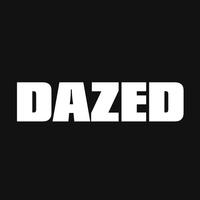Damien Hirst is (allegedly) a lying fraud
Thousands of the artist’s works dated to 2016 were actually mass-produced years later, according to a new report. ✍️ - Thom Waite
Damien Hirst, once an enfant terrible of the 90s UK art scene, has long since graduated to just being terrible. From laying off 63 members of his studio staff at the height of the pandemic while his companies claimed £15 million in government loans (he’s one of the richest artists in the world btw), to leading his fanbase into the murky world of NFTs, this man has never been art’s most principled soldier, but now he’s reportedly been exposed as a straight-up fraud too.
As reported by the Guardian, Hirst created at least 1,000 paintings dated to 2016 several years after the fact, despite inscribing the year on the artworks beside his very own signature. The works in question? A bunch of coloured dots on A4 paper, which the artist presented as a series called The Currency in 2021 (the one where fans were given the option of buying the physical painting for £2,000, or burning it and receiving an NFT instead).
At the time of the sale, which netted Hirst a cool $18 million, he said of the project: “It comprises of [sic] 10,000 NFTs, each corresponding to a unique physical artwork made in 2016.” The seller of the artworks, Heni (which is run by Hirst’s business manager) also specified that the paintings were “created by hand in 2016 using enamel paint on handmade paper”.
In the Guardian report, however, five sources close to the work – including painters of the extortionate dots themselves – disputed these claims, saying many of them were mass-produced as late as 2019. According to their accounts of the “Henry Ford production line” that saw dozens of painters hired by Hirst’s Science Ltd, at least 1,000 were made during a two-year period from 2018 to 2019, and maybe even several thousand.
Hirst and Science declined to reveal exactly how many of the artworks in The Currency were made after 2016 when contacted by the newspaper for comment, but didn’t dispute that at least 1,000 of them were made on a different date to the one they were labelled with. According to the artist’s lawyers, this doesn’t count as misleading collectors, because it’s Hirst’s “usual practice” to label physical artworks with the date of the project’s conception, rather than when they were actually made.
This also explains why several of Hirst’s famed formaldehyde sculptures, created in 2017, have previously been dated back to the 90s and exhibited as such in galleries around the world. “Artists are perfectly entitled to be (and often are) inconsistent in their dating of works,” his lawyers argued when confronted about these confusing conserved corpses in March 2024.
On a related note: I’ve just decided that this article was written in May 2124. Hello from the future. Not much has changed but Damien Hirst’s body is exhibited in the National Gallery, preserved in a vat of the artist’s own chemicals. It’s hideous. It was the world’s first billion-pound artwork – he took the payment in advance and still somehow managed to avoid paying any taxes.
Anyway, back to 2024. The Guardian report also features details of the painting process, which was – as one artist recalls – “very, very tedious”. The “factory-style” production saw many painters work eight-hour days in gas masks (to protect them from the fumes) to paint hundreds of pages marked with Hirst’s head and a stamp of authenticity, laid out on long tables. “There were loads of sheets on these tables, and they were quite low so you had to constantly bend down to do the spots,” says another artist. “After a while some people were getting repetitive strain injuries.” Lawyers for Hirst and Science have responded that they always adhered to relevant health and safety rules and practices.
Is it a surprise that Hirst doesn’t seem that well-liked among his workers? Not really. Does it come as a shock that he misled collectors about a few dates, when he’s also the man who torched half his fans’ artworks and sold them essentially nothing? Also no. Want to make a complaint? Just wait 100 years, and you can come to the National Gallery and say it to his pickled face.

